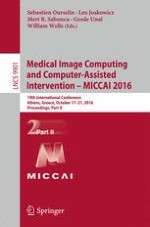2016 | OriginalPaper | Buchkapitel
Accounting for the Confound of Meninges in Segmenting Entorhinal and Perirhinal Cortices in T1-Weighted MRI
verfasst von : Long Xie, Laura E. M. Wisse, Sandhitsu R. Das, Hongzhi Wang, David A. Wolk, Jose V. Manjón, Paul A. Yushkevich
Erschienen in: Medical Image Computing and Computer-Assisted Intervention – MICCAI 2016
Aktivieren Sie unsere intelligente Suche, um passende Fachinhalte oder Patente zu finden.
Wählen Sie Textabschnitte aus um mit Künstlicher Intelligenz passenden Patente zu finden. powered by
Markieren Sie Textabschnitte, um KI-gestützt weitere passende Inhalte zu finden. powered by
